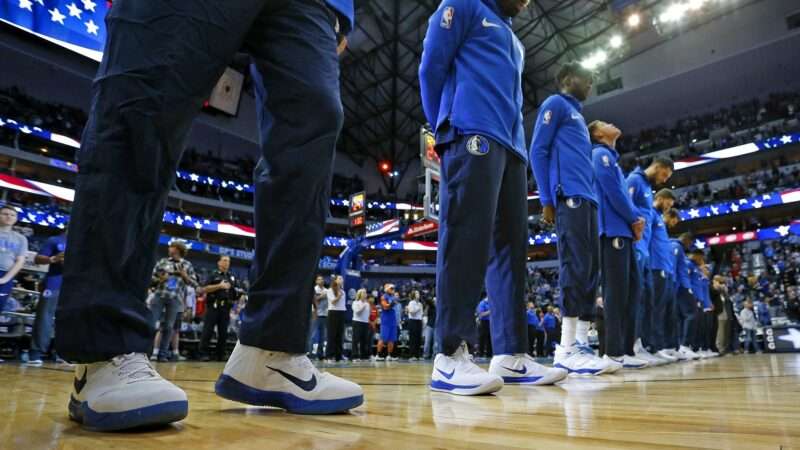On Monday, in Freyd v. University of Oregon, a panel of the U.S. Court of Appeals for the Ninth Circuit split over whether a university’s practice of giving “retention raises”–salary increases to prevent faculty from accepting lateral offers at other schools–could constitute employment discrimination if, as alleged in this case, the practice produces pay disparities between men and women.
Judge Jay Bybee wrote the majority opinion, joined by District Court Judge Kathleen Cardone (sitting by designation). Here is how he sets the stage:
Jennifer Freyd is a Professor of Psychology at the University of Oregon (“the University”). Although she is a well-recognized academic and pioneer in trauma studies, the University pays Freyd several thousand dollars less per year than it does four of Freyd’s male colleagues, despite their being of equal rank and seniority. Freyd alleges that this gender disparity in pay is department wide and is caused by the University’s practice of granting “retention raises” to faculty as an incentive to remain at the University when they are being courted by other academic institutions. She further claims that female professors at the University of Oregon are less likely to engage in retention negotiations than male professors, and when they do, they are less likely to successfully obtain a raise.
Freyd sued the University alleging violations of, inter alia, the Equal Pay Act, Title VII, Title IX, and Oregon law.
The district court granted summary judgment for the University on all counts. The court’s majority, however, reversed the district court on several counts, finding that a reasonable jury could have concluded that the University of Oregon’s policies, including its practice of offering “retention raises,” violated federal or state employment discrimination laws because they produced pay disparities between male and female faculty who perform equivalent work.
Judge VanDyke wrote separately, concurring in part and dissenting in part. His opinion begins:
Jennifer Freyd is far from the typical employee arguing that she is being treated differently based on her sex. She is not merely a professor of Psychology, or even just a tenured professor of Psychology. She is a full professor of Psychology at the University of Oregon—the top echelon, crème-de-la-crème of her academic field. She is, one might say, in the big leagues of her profession. According to Dr. Freyd herself, her job at her elite level of academic achievement is marked by “considerable discretion and autonomy in developing and executing a unique research agenda and professional profile,” and “[n]o two people will exercise their discretion and autonomy in the same way.”
Just as we see with top professional athletes or the very best attorneys in their field, competition is fierce for leading academic talent. Universities understandably attempt to poach top dons from other schools by offering better pay and other benefits and opportunities, and the professors’ home institutions are often required to make comparable offers (called “retention raises”) to keep their own outstanding people—especially those who are willing to seriously entertain an offer to change institutions. This case effectively challenges that market-driven practice as violative of a host of federal and Oregon laws prohibiting sex-based discrimination.[FN1]
FN1. The majority criticizes what it characterizes as my “strong preference for a ‘market-driven practice.'” My preferences are unrelated to my pointing out the obvious here. The fact that an employment practice is “market-driven” may not necessarily exempt it from Title VII, but it is unquestionably relevant to whether it is prohibited. While it is perhaps true that a “‘business necessity’ defense is not the same as a guarantee of a free market,” it is certainly true that every business necessity is, ultimately, market-driven. Even the majority cannot avoid market-driven concepts when discussing the University’s business necessity defense (“the need for retention raises” and “job-related” have no meaning apart from a job market).
If Freyd is correct that—even in this elite context, where the defining characteristic of professors at this level is their uniqueness—pay disparities based on retention raises can permit a jury to award damages for sex discrimination, then employers will predictably be incentivized to abandon a tool for retaining top talent and revert to lock-step pay. Worse, unless all of the federal circuits agree with ours (always an unlikely proposition), another predictable result of today’s decision is that universities in the Ninth Circuit will be unable to compete economically to retain their best professors, and we could see a corresponding brain drain in universities in the western states.
Of course, if this were required by our laws prohibiting sex discrimination, then so be it. But it isn’t. The district court was correct that, for professors at this level, “a university is more akin to the National Baseball League than it is to a traditional employer.” Freyd v. Univ. of Or., 384 F. Supp. 3d 1284, 1288 (D. Or. 2019). Only by emphasizing a superficial “common core of tasks” shared by full professors and downplaying all of the obvious differences that have made them stand-outs in their profession can the majority conclude that “a reasonable jury could find that Freyd and her comparators … do substantially equal work” for purposes of the Equal Pay Act. The majority also errs in its consideration of Freyd’s Title VII disparate impact claim, relying on irrelevant statistical data to find a genuine issue of material fact and then indulging the academic fiction that the University’s retention raise practice may not serve a business necessity. I disagree with these conclusions, and therefore respectfully dissent.
from Latest – Reason.com https://ift.tt/3qZ84ld
via IFTTT



